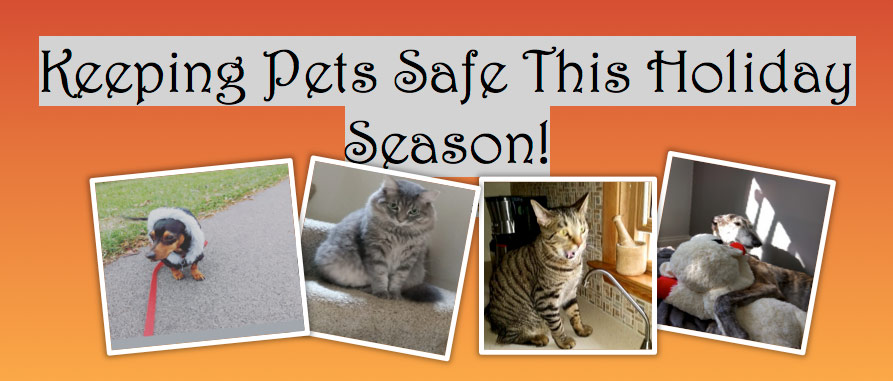Keeping pets safe this holiday season
Holiday Food Don’ts
Rocking around the Christmas tree is great, but don’t let the sight of all those presents and glittering lights distract you from your pets whereabouts relative to the dinner table.
Emergency vets are very busy around the holidays. A well-meaning guest might slip Spike a turkey leg or leave a box of chocolates too near to Bailey. Turkey bones can break teeth, lodge in the throat and even lacerate the stomach or intestines, resulting in the need for surgery. Chocolate, particularly dark or baker’s chocolate, is toxic in large amounts, as are macadamia nuts, grapes, onions and garlic.
Seemingly harmless foods like stuffing and mashed potatoes can contain garlic powder, chives, dairy and onions, all of which are toxic to dogs. Xylitol is a sugar substitute found in candy, gum, mints and baked goods that even in small amounts can be deadly.
Xylitol can cause a dramatic drop in blood glucose levels, sometimes resulting in liver failure and even death.
Dogs are not used to eating rich foods. Meats high in fat like ham can cause gastrointestinal issues including vomiting, diarrhea and even pancreatitis.
And no alcohol! Getting the dog drunk is never funny. Caffeine is also a no no!
Holiday Decor Don’t’s
Try to Pet-proof your Christmas tree and other decorations to the best of your ability.
Place your tree in a corner and place ornaments, lights and tinsel out of reach of pets. Sweep up fallen needles as they fall, as they pose a choking risk. A pet that chews on lights is at risk of electric shock; a cat or dog that invests tinsel risks getting it caught in the intestines.
In addition to being a choking hazard, glass or plastic ornaments that break into sharp shards can cut pets tender paws and mouth.
Many popular homemade ornaments are made of a play dough-type material with a high salt content. The sweet smell of this material is a lure to dogs, but extremely toxic. Place these ornaments near the top of the tree!
Remember, many holiday plants, including poinsettia, holly and mistletoe are mildly toxic to pets. Keep them out of reach just to be safe!
Take a few precautions and keep your four-legged family members healthy, happy and safe this holiday season.









